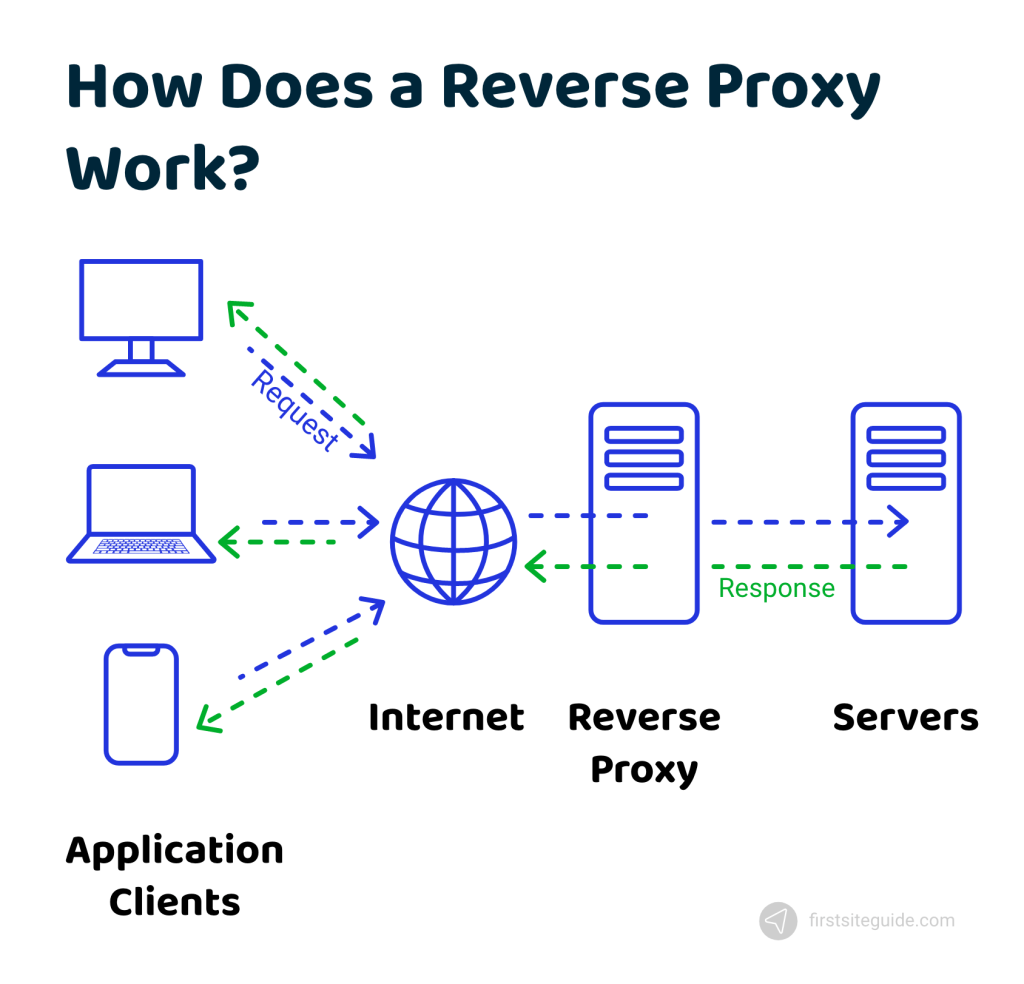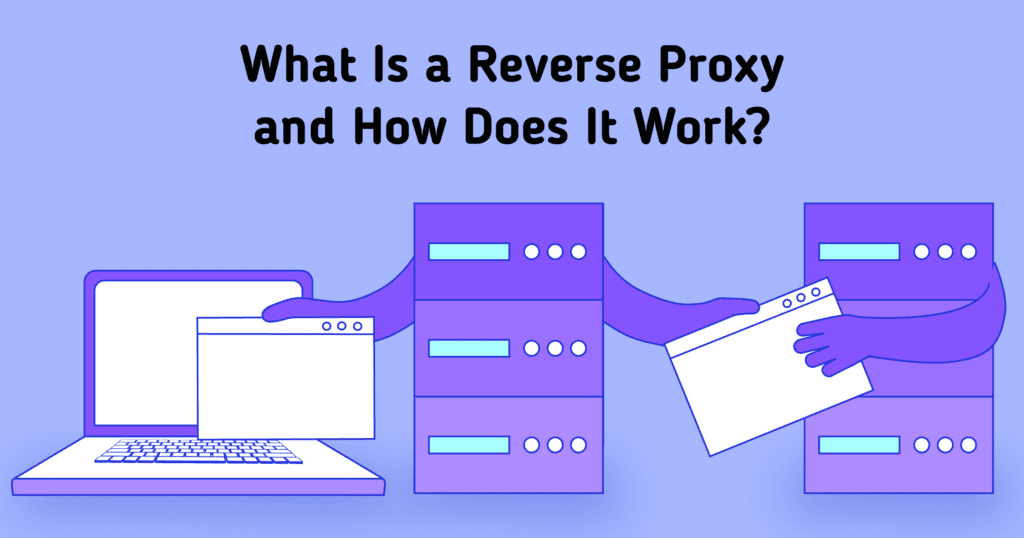With so many proxy types available on the market, it can be challenging to understand which one to choose for your specific needs. One of the most popular proxy types available is a reverse proxy.
Below we explore everything about reverse proxies, including how they work, their use cases, and what makes them unique.
Defining a reverse proxy server
Before you can understand what a reverse proxy is, you must brush up on your knowledge about proxies in general. A proxy server takes over your internet connection and acts as an intermediary. It serves as a gateway routing all outgoing and incoming web traffic.
Proxies are often defined from the client’s perspective. A reverse proxy is unique because it sits in front of one or multiple web servers. You will often find a reverse proxy sitting behind a firewall in a private network. Its job is to receive client requests and direct them to the backend server.
How a reverse proxy server works
Understanding how a reverse proxy server works is straightforward. Its role is to intercept client requests on behalf of the servers behind it. Upon intercepting those requests, a reverse proxy sends them to the origin server and receives responses from it. Ultimately, its job is to ensure that no client ever directly communicates with a web server.
Approximately 24% of online websites use a reverse proxy. When you try to access any of these sites, your request will be intercepted by a reverse proxy. It will then forward it to the target web server, fetch a response from it, and forward it to you.

Basic reverse proxy uses
Before you can choose the best proxy server for your needs, you need to know specific proxy types’ use cases. While reverse proxies have found many applications in the real world, they are most commonly used for ensuring anonymity, improving protection, and better load balancing.
Anonymity
A reverse proxy can intercept all requests headed for a server or servers behind it. It can also help to protect the identities of the people making those requests.
Protection
Since reverse proxies intercept all requests, they can be used as an additional layer of protection. For instance, you can configure a reverse proxy to fend off DDoS attacks and keep the servers behind it well protected. Plus, they can handle SSL encryption as well.
Load balancing
Most commonly, reverse proxies are used to distribute client requests evenly across a group of servers. With better load balancing, web servers can operate at optimal speeds while the risk of overloading is kept at a minimum.
What makes a reverse proxy unique?
Traditional proxy servers are commonly used to protect clients. What makes a reverse proxy unique is its use case. It’s used to protect servers. A reverse proxy forwards their requests to a web server which processes them and returns them to a reverse proxy.
Clients only ever directly communicate with a reverse proxy server without even knowing that there is an entirely different server behind it that processes their requests.
Conclusion
As you can see, reverse proxies are easy to understand. A reverse proxy simply sits in front of a server and intercepts all of the requests directed to it. It’s commonly used to route traffic to servers, providing anonymity, protection, and load balancing.

